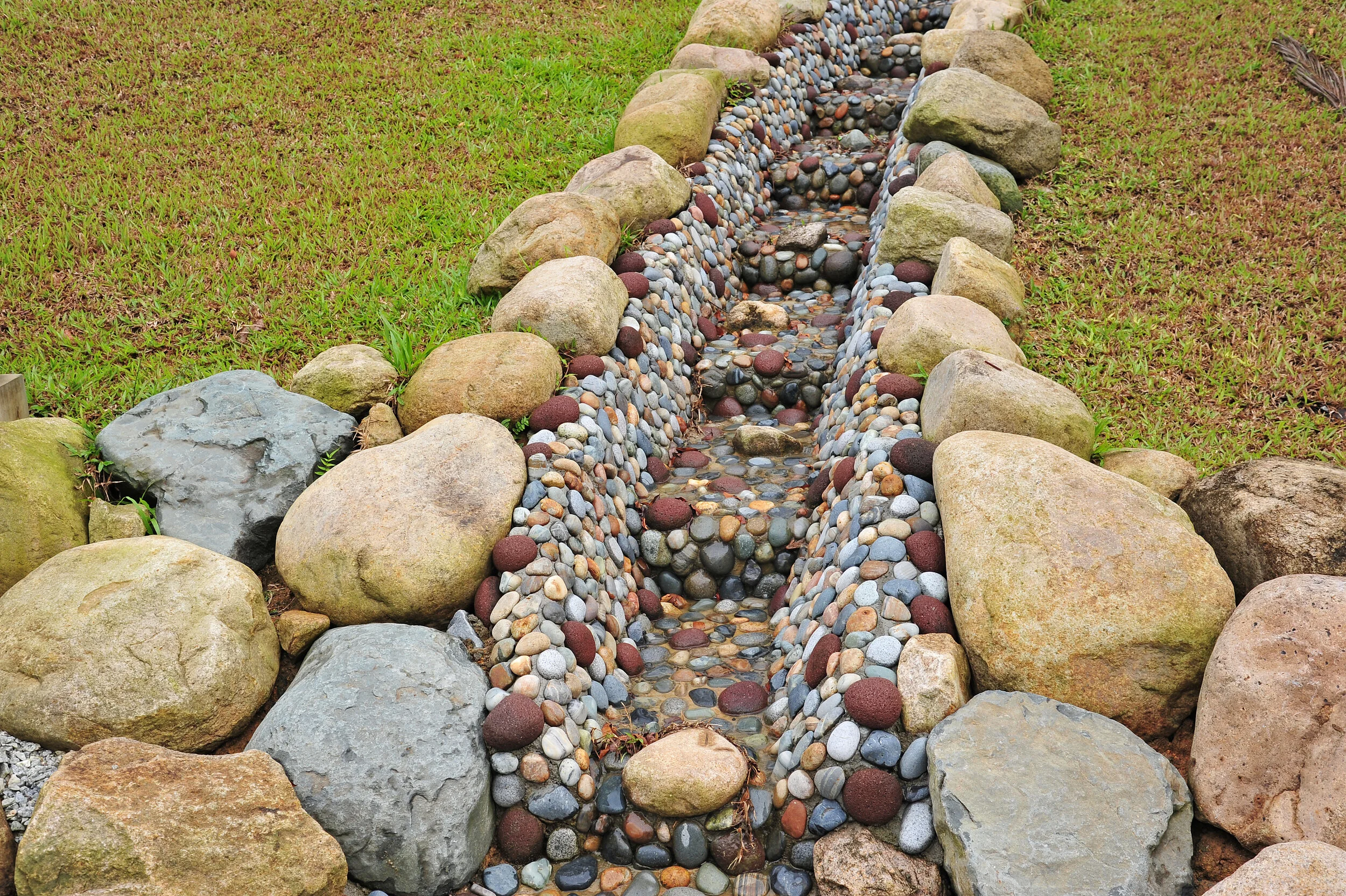If you are preparing for the installation of a French drain, you may find yourself still wondering exactly what a French drain does. You may also find yourself questioning whether you really need one. This is because the idea of having trenches dug in and around your property can be less than appealing. Here are some questions to ask before the French drain excavation begins at your Milford, NH property.
What Is a French Drain?
A French drain is a sloped trench filled with gravel or rock and commonly contains a perforated pipe. The purpose of a French drain is to redirect surface and ground water away from areas where water pools or collects. Water will naturally find pockets in soil and move downward. The rock bed of a French drain draws the groundwater in from the large pockets between the rock. The water then enters the pipe and is diverted downward into a designated area.
Related: Advantages of Using the French Drain System for Backyards in Bedford, NH
What Are the Signs That I May Need a French Drain?
If you have areas of your lawn that are always damp or you notice standing water and mud, it may be a sign that you have drainage issues. Additionally, if you notice a discoloration along the perimeter of your home from water or if your basement is always damp and moldy, it may be a sign that you there is standing ground water. You can often tell areas that have drainage issues by observing how long the water remains standing after a good rain.
What Problems Can a French Drain Solve?
French drains are typically installed when the pooling and ground surface water are causing damage to landscaping, hardscape, or any architectural structures on your property. French drains can divert water away from patios where pooling and standing water can cause damage to pavers, flooring, and the foundation. They are often installed along driveway areas to prevent flooding and washouts of areas where you need to drive and walk. French drains are also the perfect attributes around a garden or flower bed to prevent standing water from over-saturating soils and causing root damage.
How Much Room Will a French Drain Take?
A French drain’s size will vary to meet specific needs. However, the typical trench is approximately 8” to 2’ deep and roughly ½’ wide. The length of the drain is going to be dependent on the size and length of the perimeter of the area where drainage is a problem. This could mean the trench will need to run several feet or even yards. Complex French drains can have several channels and become very intricate. A professional will be able to figure proper sloping, pipe size, and trench length, as well as ensure that underground utilities or other subsurface obstacles are not impacted.
How Is a French Drain Installed?
Professionals will typically dig the trenches with a backhoe. After the trench is dug, gravel is poured along the trench to cover approximately 2” to 4” of the bottom. A perforated pipe is then laid in the trench on top of the gravel. After the pipe is in place, the pipe is completely covered by filling the remainder of the trench with gravel. At this point the French drain can be topped off with decorative landscaping rock or covered with soil and turf.
Related: 6 Things to Consider When Choosing Excavating Contractors in Amherst, NH
How Do I Know the French Drain is Working?
If the water that was once pooling and collecting in areas is still visible, it is likely that your French Drain isn’t working properly and may have a clog or something obstructing the water flow. A French drain will last decades if installed properly and will likely need little maintenance, if any. So, if you do notice pooling water where there shouldn’t be any, an auger may be needed to snake out the clog or locate the blockage.


